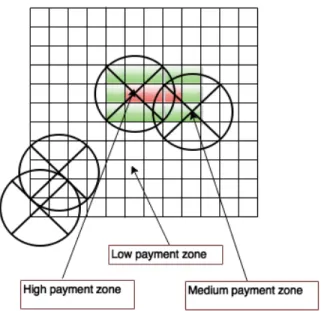Production Management•LTH•June 2015
A Data Driven Approach of
Optimizing the Handling of
Limousine Drivers in Dubai
Alexander Engels
Anton Jansson
Lund University Faculty of Engineering
In the last couple of years, the business environment in many taxi industries around the world has experienced big changes. New companies using the principle of shared economy are revolutionizing the industries using a new business model, that enable the taxi drivers to have a higher utilization, making it possible to drastically reduce the cost of a taxi ride. A big difference when using a business model that leverages shared economy compared to a more traditional business model, is that the company does not employ any drivers but purely act as a middleman between customers and drivers. This implicate that in order to generate more business, it is simply not enough to just focus on how to create a great customer experience, but the way the company is handling its supply of drivers is just as important. Careem FFZ Ltd ("Careem”) is a startup company based in Dubai, using the principle of shared economy in the transportation industry, and connects customers with drivers through one customer app and one driver app. The objective of this article is to solve the problem of how Careem, using a data driven approach, can optimize their handling of taxi drivers in Dubai, in order to improve the probability of their customers getting a car, reduce waiting times for their customers and reduce cost for Careem.
I.
Driver Behavior
To establish what actions to propose to Careem in order to solve the objective of this article, it was crucial to understand the driver behavior, especially in terms of which booking offers the drivers accept and which they reject. By creat-ing hypotheses regardcreat-ing which characteristics of a booking offer that influenced the probabil-ity of a driver accepting a booking offer, also known as the acceptance rate, and testing these hypotheses using historical data, it was possi-ble to better understand the driver behavior. The factors that turned out to have a big im-pact on the acceptance rate was the distance to pick up, the booking offer payment, the dis-tance of the trip and the hotness of the market. Based on these factors, three proposed lines of actions were suggested to Careem.
II.
Proposed Lines of Actions
Adjust the Payment to the Drivers to Accomplish a Desired Acceptance Rate
By using the factors impacting the acceptance rate, it was possible, using logistic regression, to build a model that could predict the ac-ceptance rate of a specific booking offer to a specific driver. This model made it possible for Careem to choose which acceptance rate they desired, and adjust the bonus to achieve that acceptance rate. The knowledge of the acceptance rate of each driver given a specific booking offer, made it possible to calculate the probability of a customer getting a car, which is crucial in order to offer a reliable service.
Implement a Heatmap for the Drivers
Since the distance to pick up turned out to be a very important factor for the acceptance rate, 1
Production Management•LTH•June 2015
it was crucial to try and shorten this distance as much as possible. One way of accomplish-ing this was to improve the communication of payments with the drivers by implementing a heatmap in the driver app. A snapshot of the heatmap is showed below:
Figure 1: The figure presents a snapshot of the
imple-mented heatmap.
Testing of the heatmap confirmed the hy-pothesis that by showing the areas in Dubai where drivers could receive a higher payment, they were willing to move proactively to these zones. By doing so, the average distance to customer decreased.
Adjusting the Zoning Structure
Another way of decreasing the distance be-tween the customer and the drivers was to change the zoning structure that Careem used. Careem had divided Dubai in large static zones and moved supply between different zones by adjusting the payment to the drivers in differ-ent zones. The amount of the paymdiffer-ent in the different zones was set depending on the mar-ket conditions within each zone. The large size of the zones and the lack of a tool that could be used to move supply within each zone, made it impossible for Careem to proactively move its supply in a granular way. This problem is illustrated in figure 2, where Careem are not able to proactively move its supply to the hot area.
Figure 2: The figure illustrates an example of the
prob-lem of moving supply to the hot area using the current zoning structure.
To overcome the problem described above, an action was proposed where a grid approach is applied, with each square representing one zone. Instead of just basing the driver payment on the market condition within each single zone, the market conditions in the zones close by are also taken into account. The concept is easiest understood by reviewing the figure below, together with the description.
Figure 3: The figure presents the proposed new zoning
structure.
Production Management•LTH•June 2015
The color in each square, which illustrates different driver payments, is set depending on the market conditions within the circle that has its center in the center of the square.
III.
Conclusions
An implementation of the proposed lines of actions made it possible to test the effect in Careems real business environment. The tests showed that the new ways of communicating and pricing to the drivers drastically improved Careem’s handling of its supply of drivers. For Careem, it is important to not only focus on how to acquire more customers, but also on how to attract and incentivize drivers in order to keep offering their customers reliable ser-vice and keep gaining market shares, in a very competitive marketplace.
